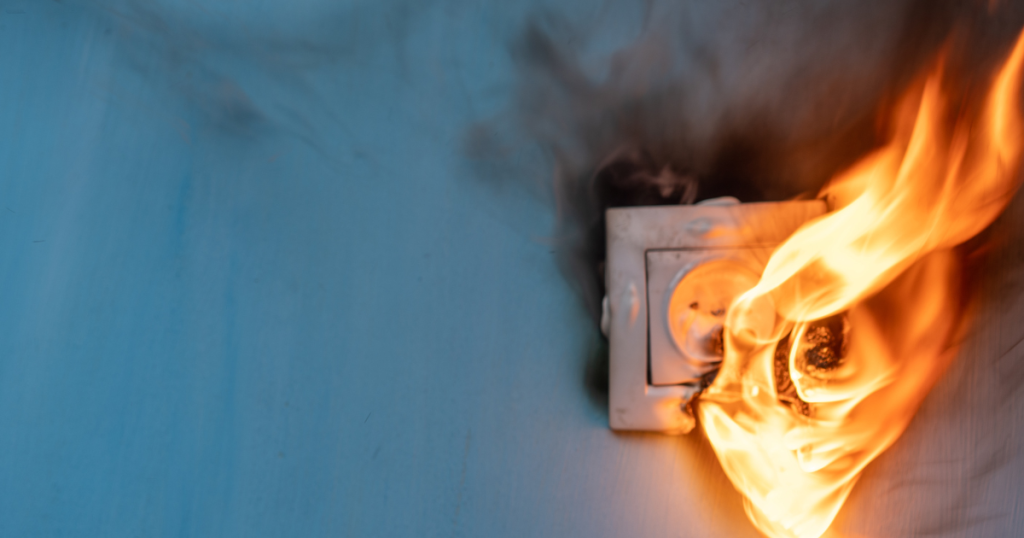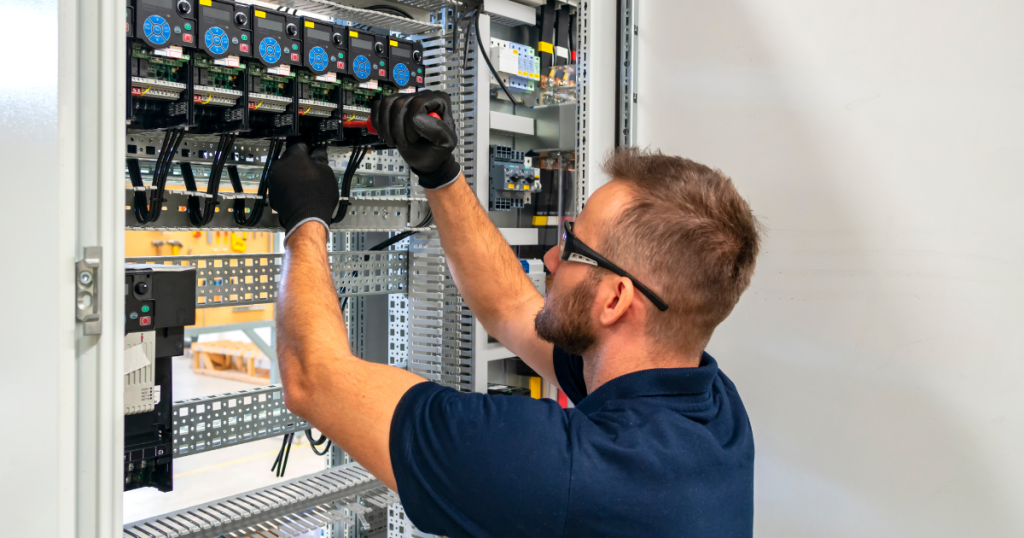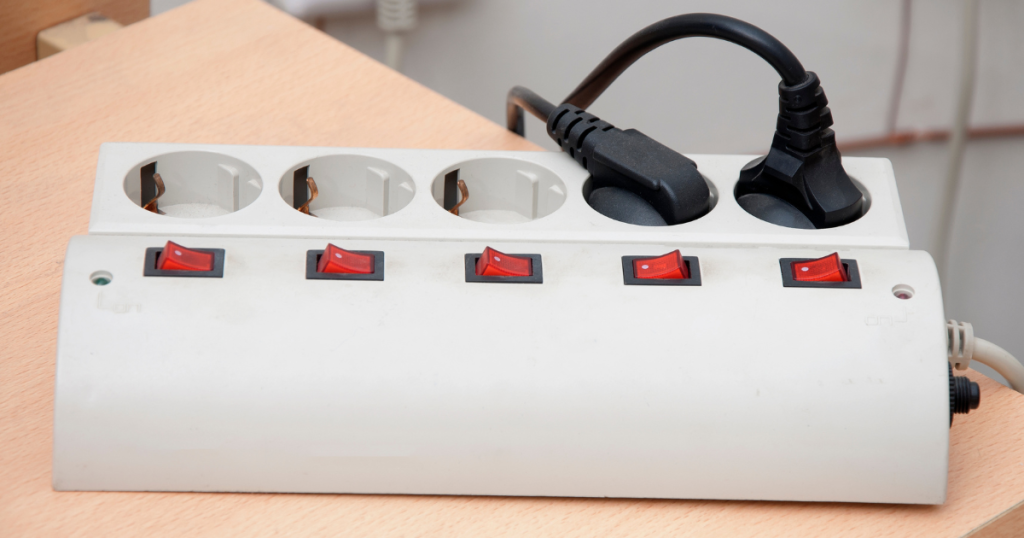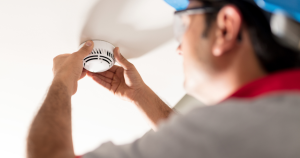Are your electronics and appliances protected against power surges in the coming months? Learning how to install whole house surge protector is essential for Arizona homeowners during the monsoon season.
With power grid disruptions, severe weather concerns, and aging infrastructures on the rise, the risk of facing a power surge can be inevitable.
Whole house surge protectors help ensure all electronic devices and appliances in your house remain intact. If you live in a region vulnerable to storms or simply wish to ensure their longevity, investing in one should be a top priority.
Don’t leave your electronics vulnerable — keep reading below to learn more about installing surge protection devices.
What Happens During a Power Surge?
Every electrical system can be susceptible to voltage spikes and surges. This is especially true during monsoon season in Northern Arizona when lightning and power outages contribute to more surges than usual.
However, sudden power fluctuations don’t just stem from external forces — internal issues such as tripped circuits, short circuits, and power interruptions may also lead to surges that can potentially damage electronics in your home.

Power surges can happen when…
- Lightning strikes, which can potentially generate millions of volts of electrical power in a wire.
- There are downed power lines due to storms or other occurrences.
- The house’s electrical wiring is faulty.
- There are troublesome transformers in the electrical system.
- You have defective gadgets or appliances that consume more power than usual.
What Is a Whole House Surge Protector?
A whole-house surge protector is a device installed on the main electrical panel. Its primary function is to divert excessive voltage away from sensitive devices and appliances.
Imagine them as the protectors of your electrical systems at home. By diverting excess voltage to the grounding wire of your home electrical system, surge protectors help safeguard connected devices against potential damage or malfunction due to power surges.
Electrical fires can be avoided by taking measures to protect appliances and electrical devices from being damaged, such as protecting them against accidental overloading.
Why Use Surge Protection?
- Protects all electronics
- Provides constant protection
- Reduces the risk of electrical fires
- Saves money (protection and prevention are always more cost-efficient than replacing damaged electronics)
- Increases the resale value of your home
[Read more: Pros and Cons of Whole House Surge Protector]
How to Install Whole House Surge Protector
Before installing a whole house surge protector, hiring a licensed electrician is highly advised. It is dangerous to interfere with your primary power supply. Professional expertise is required to ensure a safe installation.
Tools needed include:
- Wire strippers
- Pliers
- Flathead screwdrivers
- Flashlight
- Electrical insulation tape
- Hammer and nails
- Voltage detector
- Drill or Driver
- Insulated work boots
- Safety glasses
- Electrical gloves
- Whole-house surge protection device
- Double-pole breakers
There are three things you need to do before installing your surge protector.
- Choose the right whole house surge protection: When choosing a surge protector, consider factors such as your home’s size, energy consumption rate, NEMA ratings, and whether you need an external or internal protector.
- Double-pole breakers: You must add a double-pole breaker to your electrical panel when installing a surge protector. Verify that the amperage rating of your surge protector can handle any additional consumption. If necessary, speak to an electrician regarding upgrading or adding subpanels.
- Review safety measures: Only professionals and electricians with proper training experience should install whole-house surge protection devices. To ensure your safety, ask for professional help. Wear safety gear and comply with electrical safety regulations.

Step-by-Step Process of Whole House Surge Protector Installation
Always follow the instructions of the manufacturer when installing a surge protector. Consult a professional electrician if you are unsure about any step of the installation process.
- Shut off the power to your electrical panel by turning off the main breaker switch.
- Remove the panel cover and its screws.
- Use a non-contact voltage tester to verify that there is no electricity running to any of the circuit breakers in the panel.
- Choose a mounting location for the surge protector and install it according to the manufacturer’s instructions.
- Connect the ground and neutral wires from the surge protector to the appropriate terminals in the panel.
- Install a double-pole breaker next to the main breaker in the panel.
- Connect the live wires from the surge protector to the terminals of the double-pole breaker.
- Use wire cutters to trim the wires to a short and straight length.
- Use wire strippers and expose wires up to 5/8″ long. Check that the entire system surge protector has been exposed. Make any necessary adjustments to ensure that the wiring is even.
- Reassemble the panel cover and tighten the screws.
- Turn on the main breaker and the surge protector’s breaker.
- Test the surge protector by flipping the surge protector’s breaker to the off position and then back on. Verify the surge protector is working correctly, usually indicated by a green light or digital display.
- Once the surge protector is successfully installed and tested, replace the panel cover and secure it with screws.
- Turn on the main breaker to restore power to your electrical panel.
[Related: How Much Does a Whole House Surge Protector Installation Cost?]
Can I Install My Own Whole House Surge Protector?
To achieve safe and optimal results, an experienced electrician should install a surge protector for the entire house. If you have experience doing electrical work and want to install the device yourself, make sure to always follow the instructions of the manufacturer as well as the step-by-step process discussed in this article.
Where Should a Whole House Surge Protector Be Installed?
Technically, the surge protector can be installed anywhere between the main electrical panel and the electricity meter. Although it is always better to install it at the main breaker panels if you can.
Is It Worth Getting a Whole-House Surge Protector?
Installing a whole-house surge protection device is beneficial as it offers comprehensive protection to your home’s entire electrical system. It guards against power surges and extends the life of your electronic devices.
A whole home surge protector can also protect you from external surges, such as those caused by lightning. Although it is not 100% risk-free, this device reduces significant amounts of potential damage during electrical surges.
A professional electrician can assist you in determining the best surge protector solution to meet your needs. Contact Assurance Electrical today so you can rest easy the next time the power goes out!
Jeff Brandlin is the founder of Assurance Electrical Services, LLC. He started in the electrical industry when he was 21 and had worked in several electrical firms before founding Assurance Electrical. Jeff is dedicated to providing the best quality service to his clients and always puts their needs first. Outside work, Jeff enjoys spending time with his wife and children.





